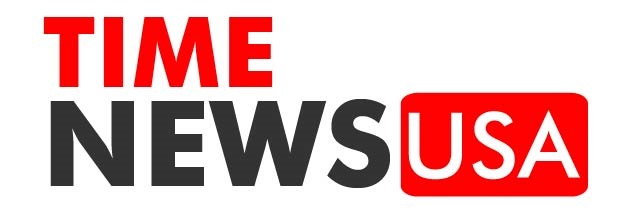CostStatus.com: How to Take Control of Your Finances Like a Pro (No Spreadsheets Required)

Let’s be honest: most of us dread budgeting. Whether you’re running a business or planning a household grocery list, tracking costs feels like solving a puzzle with missing pieces. You jot down numbers, guess where the money went, and still end up surprised when things don’t add up. But what if there was a way to simplify this chaos? That’s where CostStatus.com steps in—a game-changer for anyone tired of financial work.
The Problem with Traditional Budgeting (And How CostStatus.com Fixes It)
Think about the last time you tried to track expenses. Maybe you scribbled notes on sticky pads, dumped receipts into a shoebox, or relied on clunky spreadsheets that crashed halfway through the month. Traditional methods aren’t just time-consuming—they’re error-prone. A 2022 study found that 67% of small businesses overspend simply because they lose track of invoices.
Read: Fmybrainsout
CostStatus.com tackles this head-on by automating the grunt work. Instead of manually inputting data, the platform syncs with your bank accounts, credit cards, and accounting software to pull real-time updates. Imagine logging in and seeing every transaction categorized automatically—from office supplies to utility bills. One user, a bakery owner in Texas, shared how CostStatus.com helped her spot a recurring $200 monthly charge for a service she’d canceled months earlier. “It paid for itself in a week,” she said.
Why Your Business Can’t Afford to Ignore Cost Analysis
Cost analysis isn’t just for Fortune 500 companies. Let’s say you run a local landscaping business. Without understanding where your money goes, you might overspend on equipment rentals or underestimate fuel costs. CostStatus.com breaks down expenses into digestible insights, like showing that 40% of your budget goes into mulch—way above industry averages.
Here’s the kicker: businesses using CostStatus.com report saving an average of 12-18% annually on operational costs. How? The platform flags patterns you’d miss, like seasonal spikes in shipping fees or underused subscriptions. One freelance graphic designer used CostStatus.com to discover she was spending $1,200/year on unused cloud storage. “I had no idea,” she admitted. “Now I redirect that cash into my retirement fund.”

Features That Make CostStatus.com a Must-Have Tool
One-Click Reports: Generate profit-and-loss statements or tax-ready summaries in seconds.
Custom Alerts: Get notified when spending exceeds limits (e.g., “Alert me if marketing costs top $5K this month”).
Multi-User Access: Share access with your accountant or team without messy email chains.
Forecasting Tools: Predict cash flow gaps before they become emergencies.
But here’s what really sets CostStatus.com apart: it’s adaptive. A restaurant owner in New York used the platform to compare food costs across suppliers, negotiating a 15% discount with their veggie vendor. Meanwhile, a college student tracked part-time earnings against student loans, avoiding overdraft fees for the first time.
Real Stories: How Ordinary People Are Winning with CostStatus.com
The Overwhelmed Startup: A tech startup burned through $50K in six months without realizing 30% was wasted on redundant software. After switching to CostStatus.com, they reallocated funds to hire a critical developer.
The DIY Renovator: A homeowner blew their renovation budget by $20K until CostStatus.com identified overspending on premium materials. Switching to mid-grade finishes saved the project.
The Side Hustler: A teacher earning extra cash tutoring online used CostStatus.com to set aside taxes automatically, avoiding a nasty IRS surprise.
These aren’t flukes—they’re results of CostStatus.com’s laser focus on transparency. As one user put it, “It’s like having X-ray vision for your finances.”

Debunking Myths About Cost Tracking
Myth #1: “It’s too complicated for non-experts.”
CostStatus.com uses plain language, not financial jargon. The dashboard shows exactly where your money goes with color-coded charts—no MBA required.
Myth #2: “It’s only for pinching pennies.”
Nope. A boutique in Miami used CostStatus.com to increase their budget for social media ads after realizing it drove 70% of their sales. Smart tracking isn’t about cutting costs—it’s about spending smarter.
Myth #3: “I don’t have time.”
Setting up CostStatus.com takes 10 minutes. After that, it runs in the background. You check it when you want, not because you have to.
How to Get Started (Without the Overwhelm)
Pick Your Plan: CostStatus.com offers free basic tiers—perfect for testing the waters.
Connect Accounts: Link bank accounts, PayPal, or accounting tools (yes, it’s secure).
Set Simple Goals: Start with one objective, like “Track dining-out expenses.”
Review Weekly: Spend 5 minutes every Friday glancing at trends.
Pro Tip: Use the “Notes” feature to jot down context. For example, label a $500 expense as “Emergency plumber visit” so you remember why it spiked.
The Future of Money Management Starts Here
Let’s face it: AI and automation aren’t going away. Tools like CostStatus.com are leading the charge in making financial clarity accessible to everyone—not just accountants. Upcoming features include AI-driven tips (e.g., “Switch to Supplier X for cheaper paper”) and bill negotiation services.
But you don’t need to wait. The core value of CostStatus.com is already here: empowerment. Whether you’re saving for a vacation, scaling a business, or just tired of money stress, this platform hands you the reins.
Final Takeaway: Stop Guessing, Start Knowing
Money doesn’t have to be a mystery. With CostStatus.com, you’re not just tracking numbers—you’re uncovering opportunities. That $100/month coffee habit? Maybe it’s worth keeping for the joy it brings. Or maybe it’s better spent on a weekend getaway. The point is, you’ll know, no wonder.









